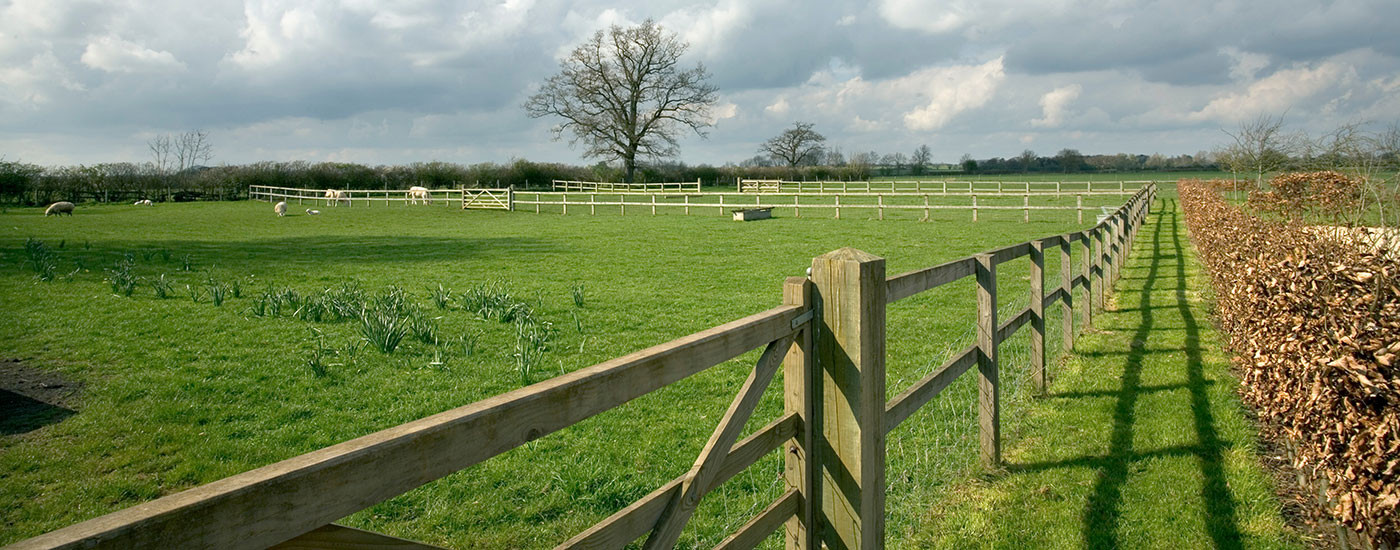What is post and rail fencing?
Post and rail fencing is the term used to describe a type of timber fencing often used in rural settings. It is characterised by two or more horizontal rails attached to vertical solid timber posts. The simplest of fencing systems, a post and rail fence is also one of the sturdiest and for this reason, is often used to contain livestock; when the rails are attached to the fence posts on the inside of the enclosure, the posts will give way slightly, rather than snap, if an animal pushes against the fence. They can also be constructed to your own specifications regarding height, simply by using taller fence posts and more timber fence rails.
Where to install post and rail fencing
A post and rail fence offers a very rural aesthetic to any setting and because of this, is a popular choice for equestrian timber and fencing. The open aspect also makes it a popular choice for property/land demarcation where an uninterrupted view is preferred, and is therefore not recommended for privacy or where a wind break is required. To contain smaller livestock, netting or wire mesh can be attached to the fence’s horizontal rails.
How to erect a post and rail fence
Post and rail fencing simply consists of perpendicular fence posts driven into the ground at regular intervals, to which timber fence rails are attached with nails or screws. Post holes should be dug at 6 foot intervals, and be deep enough to accommodate a third of the height of the post plus an extra 6 inches for ballast. The holes should be backfilled with gravel which will enable water and moisture to drain away from the timber posts, before the post is inserted into the hole. Once you are happy that the posts are upright and true (using a spirit level will make short work of this), the holes can be filled with soil and tampered down. It isn’t necessary to concrete your posts in place although you may wish to do so where the ground is particularly soft or in situations where the fence needs to withstand significance force.
Once the posts have been secured, timber fence rails are nailed or screwed to every other post, to create a continuous run of fencing. By alternating the rails between the posts, the fence will be less prone to warping and bending.
Depending on its intended purpose, post and rail fencing routinely features two or three rails. When deciding how many rails to use, allow a 6 inch clearance between the lowest rail and the ground to allow for maintenance such as mowing.
There is a type of post and rail fencing which uses morticed posts and which is known locally as Lincolnshire fencing. Our article ‘What is Lincolnshire fencing?’ goes into much greater detail about this.
Post and rail fence supplies
At Witham Timber, we supply sawn, square cut post and rail fencing. Our fence posts are available in a variety of lengths and sizes and the 75x125mm posts are recommended for traditional post and rail fences; these are also available with a four-way pointed end, for easier installation. Our square edge wooden rails in sizes 38x87mm and 38x100mm are perfect for post and rail fencing, and we also carry a range of mortice post and rail fencing, as well as all required fixings. All our timber fencing supplies are pressure treated, and sourced only from approved sawmills.
With over 40 years’ experience in the supply of quality fencing products to the domestic, commercial and equestrian sectors, we have the knowledge and expertise to help with all your fencing requirements. To contact our sales team, please call on 01205 359188 or email us at sales@withamtimber.co.uk

